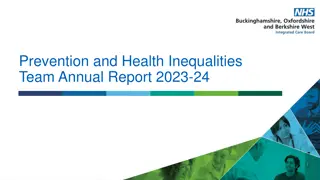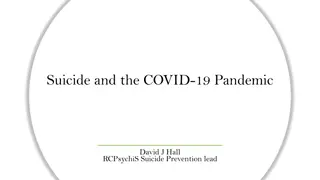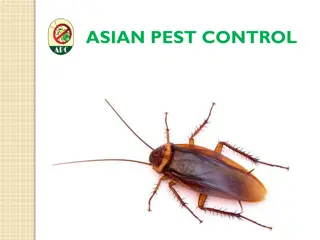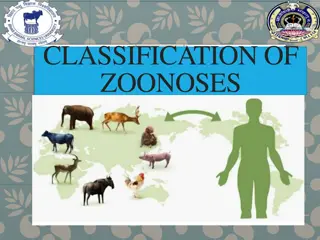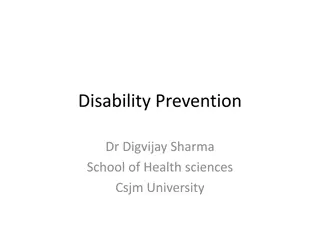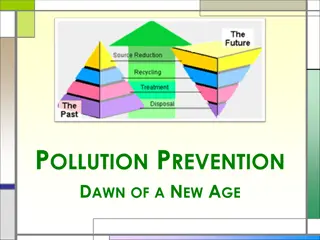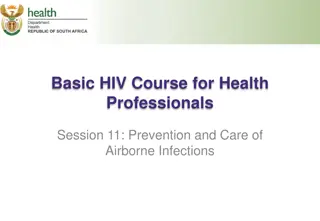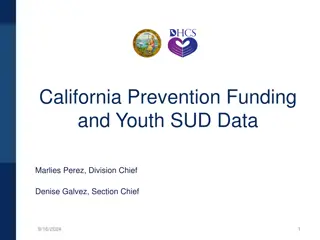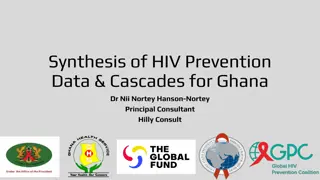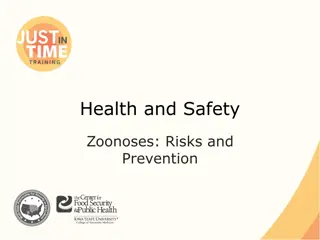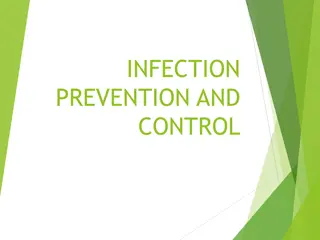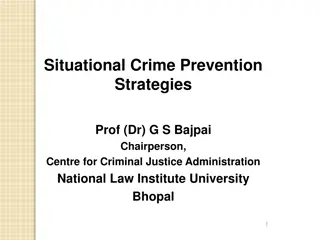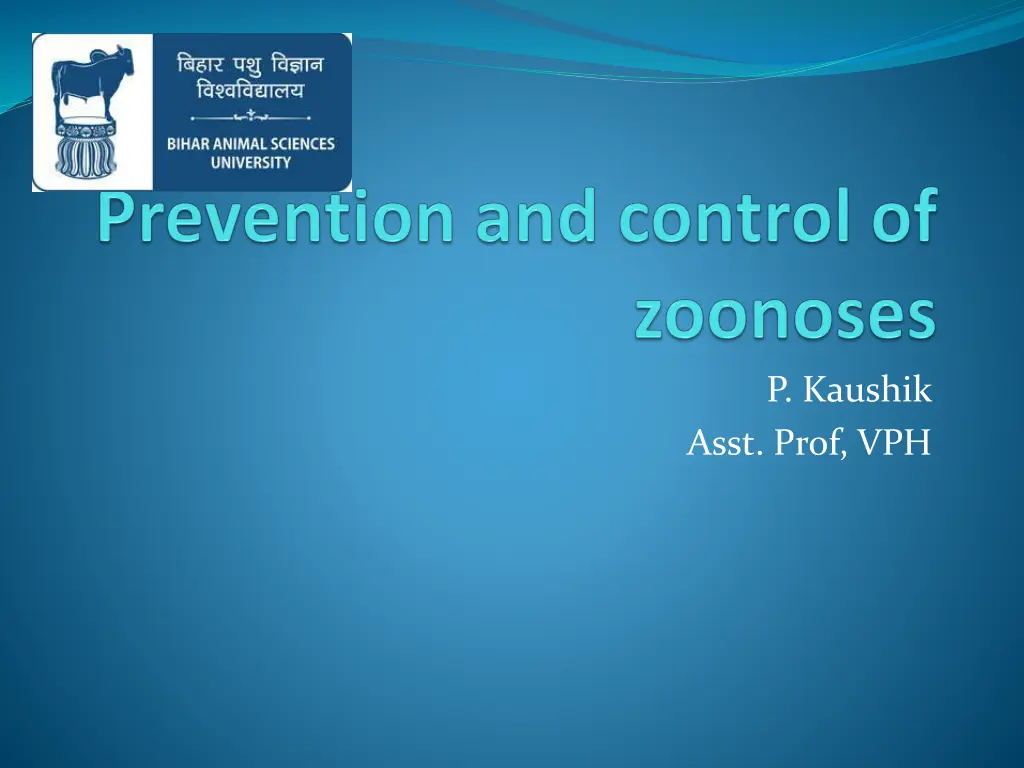
Strategies for Disease Control and Eradication
Learn about prevention, control, eradication, and elimination of diseases through various measures including quarantine and the importance of strategic planning in managing infectious agents effectively.
Download Presentation

Please find below an Image/Link to download the presentation.
The content on the website is provided AS IS for your information and personal use only. It may not be sold, licensed, or shared on other websites without obtaining consent from the author. If you encounter any issues during the download, it is possible that the publisher has removed the file from their server.
You are allowed to download the files provided on this website for personal or commercial use, subject to the condition that they are used lawfully. All files are the property of their respective owners.
The content on the website is provided AS IS for your information and personal use only. It may not be sold, licensed, or shared on other websites without obtaining consent from the author.
E N D
Presentation Transcript
P. Kaushik Asst. Prof, VPH
Prevention The measures taken to prevent the occurrence of diseases or to limit its progression or severity with intension to eliminate the diseases. It may be prophylactic, social, political Control Measure taken to reduce the morbidity and mortality from a disease to a level that it should not transmit further. Control is a continuous process and involves both preventing and treating diseases.
Eradication Eradication: It was earlier used to denote the regional elimination of a disease. It involves a time bound campaign. However, currently it is used in four different senses: 1) The global extinction of an infectious disease, eg. small pox. 2) Reduction in the infectious disease prevalence in a specific area to a level at which transmission does not occur. 3) Reduction in the infectious disease prevalence to a level at which the disease ceases to be a major health problem, although some transmission may still take place. 4) The regional extinction of an infectious agent, eg. FMD in UK.
Elimination The term is derived from the Latin words ex= out of; limen/ liminis= threshold. It is the reduction in the incidence of infectious disease below the level achieved by control, so that very few or no cases occur, although the infectious agent may still be present. Somtimes this term is used to describe eradication of a disease from a large geograhical area
The major strategies for the control and eradication of infectious agents : 1. Doing nothing: The incidence of some diseases can be controlled by doing nothing. Eg. The incidence of vector borne diseases decreases in winters when the number of the vector decreases without any human intervention. 2. Quarantine: It involves the isolation of animals that are either infected or suspected of being infected, or of non-infected animals that are at risk. It is generally adopted during import of animal from endemic country. It may also be adopted while introducing new animals to a farm.
The period of quarantine depends on the incubation period of the agent, the time taken for the infection to be confirmed, the time taken for an infected animal to become non- infectious (either with or without treatment) In India the quarantine facilities are located in New Delhi, Kolkata, Chennai and Mumbai. The Quarantine Station at Delhi was established 1969, followed by Chennai in 1974, Kolkata in 1975 and Mumbai in 1981.
Test and Slaughter: This strategy involves the culling of infected animals. It is an effective way to control a disease. It is commonly followed the world In India the strategy is not that effective due to religious (ban on cow slaughter) and economic constraints. However implemented in our country for Avian Influenza, where all birds in the 5 km infected zone and 10 km surveillance zone are culled. this is being
4. Vaccination Vaccination is an important strategy where slaughter is not possible. Eg is Eradication of RP from India. Strategic vaccination can be (i) ring vaccination: It involves the vaccination of animals surrounding an infected area to provide a circumjacent barrier to the spread of infection, (ii) barrier vaccination: involves vaccination not completely circumscribing an infected area, (iii) suppressive/ dampening down vaccination: it involves vaccinating animals both within and around an infected area.
5. Therapeutic & prophylactic therapy: Drugs can be given both for preventing or treating of animals in order to control/ eradicate any infection. 6. Restriction of movement of hosts: This strategy involves the ban on the movement of animals during periods of epidemic and eradication campaign to reduce the risk of diseases transmission.
7. Movement of host: Animals can be removed from high risk area to prevent the occurrence of new infections. 8. Mixed, alternate and sequential grazing: In case of parasitic infections this strategy is adopted. In mixed grazing susceptible population is grazed along with resistant populations to reduce the pasture contamination.
9. Control of vector: Various methods can be adopted for control of vectors like, destruction of habitat (snail, mosquitoes), use of chemicals, preventing contact with ten vectors etc. 10. Disinfection of fomites: These may include farm equipments, vehicles, surgical instruments etc. Disinfection of fomites helps in the prevention of transmission of infectious agents from one animal to another.
11. Niche filling/ epidemiological interference: The presence of one organism in a niche prevents its colonization by another, since two species cannot occupy the same niche. This practice is adopted in the poultry industry 12. Good husbandry practices : Involves good management along with good nutrition. Avoid overcrowding, poor diet, stress, unhygieninc conditions etc.
13. Genetic improvement: Rearing of animals that are genetically resistant to some pathogens. 14. Minimal disease concept: Diseases can be reduced in intensively reared animals by disinfection of premises, breeding of disease free stock removal of infected animals.
Factors to be considered in the control and eradication 1. Knowledge of the natural history of a disease 2. Host Range and nature of host-parasite interaction 3. Veterinary facilities: A well developed veterinary infrastructure is required for the diagnosis, prevention and control of animal disease. 4. Diagnostic feasibility: Early diagnosis of disease 5. Adequate surveillance: to know the disease dynamics in order to implement a control strategy. 6. Availability of replacement stock: to avoid supply chain disruption of products
7. Opinion of owner and public. 8. Public Health significance: Animal diseases that are transmitted to human are prioritized when implementing control and eradication methods. 9. Existence of legislations and provision of compensation 10. Ecological consequences: The control and final eradication of a disease agent can disturb the balance of nature by clearing a niche that can be occupied by a virulent agent. 11. Cost and benefit


